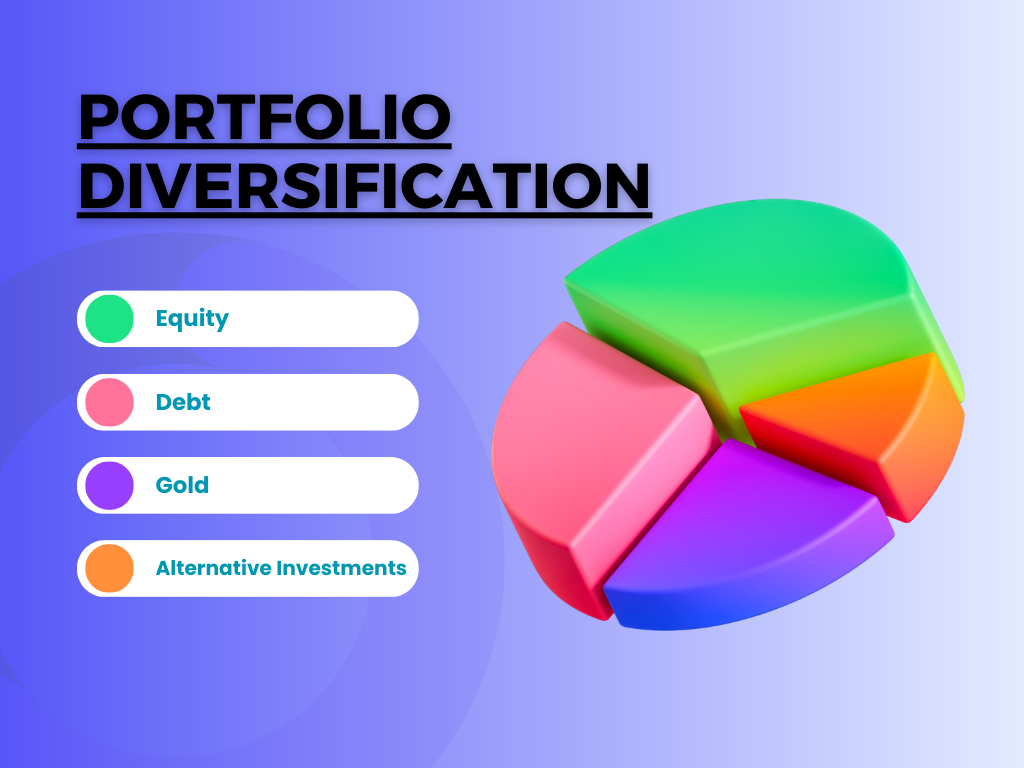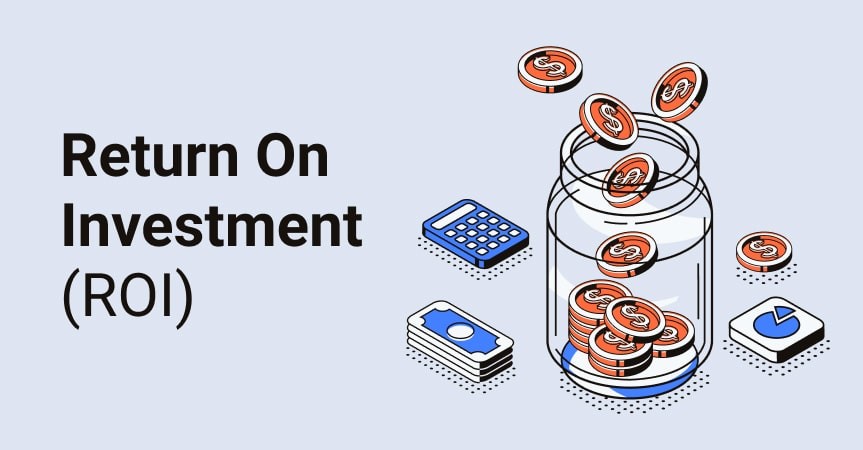Invest in SaaS has become a hot topic for investors worldwide, given the exponential growth of digital solutions. SaaS is transforming the way businesses work and providing investors with potentially lucrative chances.
The increasing reliance on cloud-based services and subscription models has fueled this trend. However, like any other investment venture, diving into SaaS requires understanding its unique dynamics.
So what makes investing in SaaS companies so appealing?
SaaS companies are known for their high scalability and predictable revenue streams – traits that make them attractive to savvy investors. Global end-user spending on public cloud services is projected to reach $332.3 billion in 2023, indicating a notable 23.1% growth from the previous year and an increasing trend of IT investments shifting towards cloud technology.”The proportion of IT spending that is shifting toward the cloud
Unveiling the SaaS Industry
The Software as a Service (SaaS) industry is at the forefront of digital transformation. It’s an area that savvy investors and entrepreneurs are watching closely, particularly due to its recurring revenue model and growth potential.
Welcome to the world of SaaS investing.
A wise man once said, “Opportunities multiply as they are seized.” This rings true in today’s rapidly evolving technology landscape where software companies have become central players.
SaaS companies revolve around providing vital services on a subscription basis. They’re perfectly positioned to benefit from increasing demand for digitized solutions across various sectors – making them attractive prospects for venture capital investment.
You’ll need insight into how these businesses operate before making any decisions related to your investments.
To ensure you stay ahead in this game, it’s crucial to understand the business models underlying SaaS enterprises along with key metrics used to evaluate their performance. In subsequent sections, we will delve deeper into the unique aspects such as how a company adds value through selling additional services to existing clients, thereby boosting revenues.
As the sector’s market expands, investing in it opens up a plethora of possibilities. The future looks bright, but informed decision-making remains paramount when dealing with volatile markets like the ones often encountered within the tech industry.
So buckle up. We’re about to embark on a journey exploring the intricacies involved while assessing profitability ratios such as gross margin, operating net profit, etc., alongside understanding competitive landscapes which can greatly impact the overall success story behind every successful investment made by Verve Ventures and other renowned firms alike.
Remember – knowledge is power, especially when navigating complex terrains such as financial markets revolving around high-growth industries like the one being discussed here.
Key Takeaway:
Invest in SaaS Dive into SaaS investing with eyes wide open. Understand the business models, key metrics and competitive landscapes of these subscription-based software companies. Seize opportunities in this high-growth industry but remember – informed decisions are your best bet against market volatility.
Decoding the Business Model of SaaS Companies
A distinct business model has emerged in the software industry that is revolutionizing how these companies function and expand, centered around recurring revenue. This model revolves around recurring revenue – often calculated as monthly recurring revenue (MRR) – which forms an integral part in ensuring their profitability and resilience amidst market volatility.
The Significance of Recurring Revenue
Recurring revenue plays a pivotal role in shaping the financial sustainability for SaaS industry players. The predictable income from existing clients not only aids them in strategizing future growth but also acts as a safety net during economic downturns or unexpected market shifts.
This consistent inflow helps mitigate risks associated with sales activities needed for acquiring customers, thereby contributing significantly towards maintaining steady company’s growth potential even when new customer acquisition slows down due to unforeseen circumstances.
Selling Additional Services: Upselling & Cross-Selling
Invest in SaaS Beyond just relying on MRR, savvy SaaS companies revolve their strategies around upselling and cross-selling additional services to boost overall revenues. These techniques are more than mere tactics; they represent strategic decisions aimed at maximizing value derived from each customer relationship while improving bottom line performance concurrently.
Upselling involves persuading current users to opt for higher-tier plans or avail premium features within the same product suite, whereas cross-selling refers to offering related products/services complementary to primary offerings. Notably, such methods do much more than augment total earnings; indeed, they enhance user experience by providing solutions tailored specifically to individual needs and preferences, hence fostering stronger client relationships over time.
Discover the secret sauce of SaaS companies’ success – a blend of recurring revenue, upselling & cross-selling. This strategy ensures financial sustainability and growth even in volatile markets. #SaaS #InvestmentStrategyClick to Tweet
Key Metrics to Consider When Investing in SaaS Companies
As you venture into the realm of SaaS investing, understanding key metrics becomes crucial. These numbers offer a window into a company’s growth potential and profitability, helping shape your investment decisions.
Diving Into ARR (Annual Recurring Revenue)
The Annual Recurring Revenue or ARR is akin to the pulse rate for any investor exploring SaaS companies investing. This figure encapsulates the expected recurring revenue that software subscription businesses can anticipate over one year – serving as an effective measure of financial health and stability.
An expert platform on subscription economics underlines how this steady stream of income plays an integral role in evaluating business valuation during investments within the SaaS industry.
Deciphering CAC (Customer Acquisition Cost)
Invest in SaaS Beyond just looking at revenues through ARR, it’s equally important to scrutinize costs associated with acquiring customers – namely Customer Acquisition Cost (CAC). The metric quantifies expenses related directly towards sales activities needed for customer acquisition including all marketing efforts aimed at attracting new clients.
A leading business publication underscores why keeping tabs on CAC helps investors evaluate whether their prospective investment maintains balanced spending while still effectively drawing in new clientele.
Leveraging CLV (Customer Lifetime Value) For Profitability Insights
Rounding off our trifecta of critical metrics is Customer Lifetime Value, often abbreviated as CLV. By estimating total revenues from each client throughout their engagement period with service provided by SaaS companies, CLV offers insights about long-term profitability prospects per individual user besides shedding light upon overall performance trends within targeted investments.
HubSpot, well-known among marketers worldwide, provides detailed guides explaining how knowledge about CLV equips investors with valuable insight regarding net profit each customer contributes across time – vital information when making informed investment decisions within the SaaS sector so better to Invest in SaaS
Key Takeaway:
In the SaaS investment game, key metrics are your playbook. Keep a keen eye on Annual Recurring Revenue (ARR) for financial health checks, Customer Acquisition Cost (CAC) to balance spending and customer attraction efforts, and Customer Lifetime Value (CLV) for long-term profitability insights.
Evaluating Market Size and Growth Potential
The SaaS industry is booming, with a projected global market size reaching impressive figures. The increasing demand for these software solutions has been fueled by rapid technological advancements that are reshaping the business landscape.
Let’s explore this growth trajectory in detail.
“Change is the only thing that remains constant,” remarked Heraclitus, a classical Greek thinker. This maxim is particularly relevant when considering the effects of tech on companies in the present day.
invest in SaaS: SaaS firms have seized upon this concept, utilizing advanced tech such as AI, ML and data analytics to bolster their services and draw in more customers. Their success serves as proof of the immense potential within the SaaS industry itself.
Increasing Digitization Trends
Digital transformation initiatives across various industries have also played a significant role in propelling SaaS companies’ growth potential. As organizations strive towards operational efficiency, streamlining workflows, and enhancing customer experience, they increasingly turn toward cloud-based software solutions offering flexibility, scalability, and cost-effectiveness.
This trend doesn’t seem to slow down anytime soon; instead, we can expect acceleration post-pandemic era where the need for robust digital infrastructure will be even greater than before. With remote work becoming the new normal during lockdowns, the importance of having efficient management tools became quite evident, which further boosted SaaS adoption rates among enterprises globally.
Influence of Remote Work Culture On Market Expansion
The shift towards remote working culture caused by the COVID-19 pandemic acted as a catalyst, accelerating SaaS product adoption worldwide, particularly those enabling seamless collaboration and communication among teams scattered geographically in different locations. From project management apps to video conferencing tools, the sudden rise in demand not only increased sales but also expanded the user base, providing an opportunity for exponential company growth within a short span of time. Hence, reinforcing the belief that ongoing trends of digitization coupled with the growing acceptance of remote work culture will continue to drive market expansion in the coming years too.
Key Takeaway:
With rapid technological advancements and increasing digitization trends, the SaaS industry is on a booming growth trajectory. The shift towards remote work culture has further accelerated this expansion, reinforcing that investing in SaaS companies can offer significant potential returns.
Investment Success Stories from Verve Ventures Investing
Venture capital firm, Verve Ventures, has a noteworthy track record in the SaaS industry. Their successful investments serve as tangible examples of how strategic decisions can lead to significant returns and there’s no better option but to invest in saas.
Their investment in an early-stage SaaS company, which we’ll refer to as Company A for confidentiality reasons, is one such success story. This organization specializes in providing cloud-based solutions tailored for small businesses and showed tremendous growth potential at the time of investment.
In less than two years post-investment by Verve, Company A recorded substantial increases in its monthly recurring revenue – proving not only that Verve’s decision was sound but also demonstrating the lucrative opportunity inherent within SaaS investing.
Evaluating Key Metrics: The Secret Sauce?
To make well-informed investments like this one with Company A, Verve Ventures Investing relies heavily on key metrics unique to the SaaS sector. For instance, they examined Customer Acquisition Cost (CAC) and found it significantly lower than industry averages due largely to effective sales activities needed for acquiring customers.
Furthermore, Annual Recurring Revenue (ARR), another crucial metric used when evaluating SaaS companies, revolves around existing clients’ subscriptions alone without even considering new customer acquisition or selling additional services. This analysis played a pivotal role in identifying high-growth opportunities like Company A.
A Peek into Future Prospects
Moving forward, Verve continues leveraging insights gained from past successes while exploring future prospects within the thriving SaaS market space. They’re particularly interested in firms exhibiting strong ARR figures, low CAC values, and robust strategies focused on upselling additional services – all factors contributing towards these companies’ profitability over time.
This proactive approach combined with a deep understanding of key trends and developments ensures that Verve remains ahead-of-the-curve when it comes down to seizing lucrative opportunities presented by emerging software companies looking to provide valuable digital solutions across various industries.
Key Takeaway:
invest in SaaS companies can yield significant returns, as demonstrated by Verve Ventures’ success with Company A. The secret sauce? Evaluating key metrics like low Customer Acquisition Cost and strong Annual Recurring Revenue. Keep an eye on future prospects that show these promising signs for a profitable investment strategy.
The Rollercoaster Ride – Investors Reporting Crazy Returns
As the world grappled with unprecedented changes in 2023, one sector that experienced a surprising upturn was SaaS investing. Despite global lockdowns and economic downturns, many investors found themselves on an unexpected rollercoaster ride of high returns.
This sudden surge can be traced back to several key factors.
With businesses worldwide transitioning towards remote operations due to pandemic conditions, there emerged an accelerated demand for digital solutions. This shift led to increased subscriptions and usage rates for various SaaS platforms.
A classic example is Zoom Video Communications Inc., a leading provider of video conferencing software services whose share price soared by over 500% during this period according to MarketWatch data.
Evaluating Market Correction Scenarios
In the realm of finance, market correction refers to when prices fall by at least 10%, but less than 20%, from their peak value. While such corrections are normal occurrences during bull markets, they also present lucrative opportunities for SaaS companies investing if timed correctly.
Savvy investors often view these periods as golden opportunities invest in SaaS because it allows them access at lower prices before the next upswing begins.
Predictions suggest we may witness certain levels of market correction happening over the course of 2023 after experiencing inflated growth rates throughout most parts last year due largely to pandemic-induced circumstances. However, even with potential corrections looming ahead, experts believe overall long-term trends still favor continued growth within the SaaS industry making it an attractive proposition for those looking forward into future investment prospects.
Surprising upturn in SaaS investing amidst 2023’s challenges. Key factor? Increased demand for digital solutions like Zoom, whose shares soared over 500%. Despite potential market corrections, long-term trends favor SaaS growth. #Investing #SaaSClick to Tweet
Strategies for Making Informed Investment Decisions in SaaS Companies
The world of SaaS investing is teeming with potential, but it requires a discerning eye and strategic thinking. To ensure your investments translate into significant returns, you need to master the art of assessing company performance, interpreting market trends, and understanding the competitive landscape.
Gauging Company’s Profitability: The Cornerstone
Your journey towards informed investment decisions begins by examining a company’s profitability. This involves scrutinizing key financial ratios such as gross margin, operating margin, and net profit margin. Gross Margin, for instance, provides insights about how much revenue remains after accounting for direct costs associated with product or service creation.
Analyzing Operating Margin: A deeper look at Operating Margin, on the other hand, reveals what portion of revenues survives after covering variable expenses like salaries and raw materials. Finally, Determining Net Profit Margin: A closer inspection at Net Profit Margins demonstrates how each dollar earned converts into profits.
Navigating Competitive Landscape: An Imperative Step
In addition to evaluating these crucial metrics, comprehending the competitive landscape plays an instrumental role before placing any bets on SaaS businesses. By understanding their competitors’ offerings, strategies, and operations through a SWOT Analysis, one can identify potential risks and uncover areas of opportunity. SWOT (Strengths, Weaknesses, Opportunities & Threats) Analysis serves as a potent tool that offers a deep dive analysis about both internal factors (strengths & weaknesses) within the firm along with external influences (opportunities & threats) affecting its operations.
This knowledge not only aids in identifying possible risks but also unearths areas
Unlock the potential of SaaS investing. Master key financial ratios and SWOT analysis to navigate the competitive landscape. Make informed decisions for significant returns. #SaaSInvesting #SmartStrategiesClick to Tweet
Conclusion – Future of SaaS Investing
As we’ve explored throughout this blog post, the growth potential within this industry is substantial.
Expect a Bright Horizon in the SaaS Industry
A future filled with technological advancements and innovative business models awaits us. The resilience of the recurring revenue model paired with increasing digitization paints an optimistic picture for investors eyeing SaaS companies.
Navigating Potential Roadblocks
In spite of promising prospects, it’s crucial to be aware that competition can get fierce in the software sector. To ensure your investment decisions are sound, understanding these dynamics becomes imperative.
SaaS companies need to stay ahead by continuously innovating their offerings while ensuring top-notch customer experience. These factors should always form part of any investor’s evaluation criteria when considering investments in SaaS firms.
Fostering Innovation: A Key Driver for Success
AI and ML are now beginning to alter many industries, SaaS included. Companies that embrace these cutting-edge technologies often attract more investor interest due to their forward-thinking approach.
This highlights how innovation plays a significant role not just from a technology perspective but also when it comes down to unique business models shaping up within the market space.
Trends in Business Models
Besides tech-driven innovations, evolving trends like usage-based pricing models may play pivotal roles too. Offering customers pay-as-you-go options over fixed monthly or annual subscriptions could potentially increase acquisition rates leading towards better returns on investments.
Thus, staying updated about the latest developments and trends forms a key aspect of making informed investment decisions into profitable ventures within the SaaS domain.
It’s clear that despite challenges faced during turbulent times, there lies immense potential for those willing to invest time and understand the intricacies involved here.
We encourage you all to keep yourselves abreast of the changing landscape and continue exploring the lucrative opportunities it offers.
Key Takeaway:
Investing in SaaS companies offers vast potential, but it’s not without challenges. Staying ahead of fierce competition requires constant innovation and a keen understanding of market dynamics. Embracing cutting-edge technologies like AI and ML, adopting unique business models, and keeping abreast with the latest trends can pave the way for successful investments.
Conclusion
So, you’ve journeyed through the world of SaaS. You’ve grasped its business model and understood why recurring revenue is so crucial.
Invest in saas
You’re now familiar with market trends and opportunities that make investing in SaaS companies attractive. You know what financial stability looks like for these firms, thanks to key metrics such as ARR (annual recurring revenue) and CAC (customer acquisition cost).
The importance of product-market fit? Check. The need for unique customer acquisition strategies? Got it covered. Now you have a solid understanding on how to successfully invest in saas companies.
Diving into the stimulating world of SaaS investments may appear intimidating at first, however with this knowledge you can trustingly take the plunge.
Your investment future starts today!
If you want to learn more about this, sign up for my newsletter.


